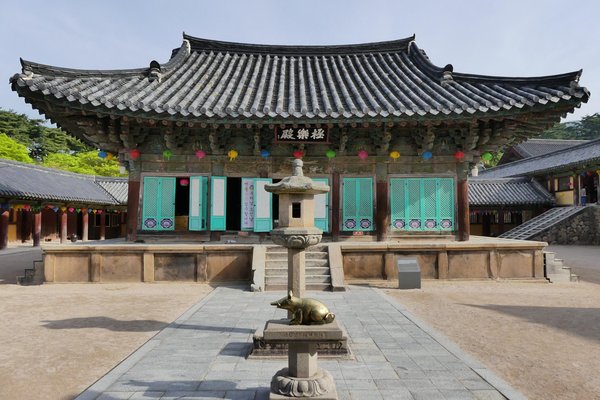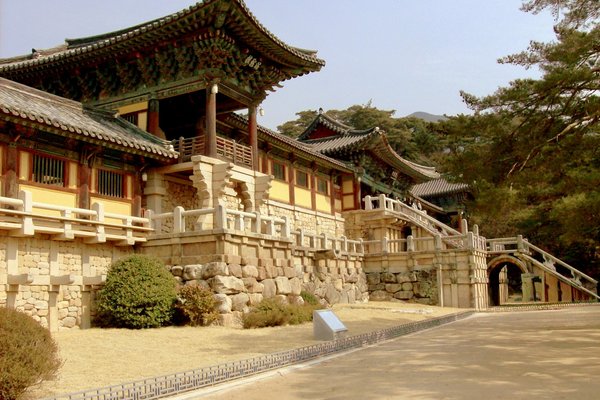Republic of Korea
Seokguram Grotto and Bulguksa Temple
Seokguram Grotto and Bulguksa Temple are masterpieces of East Asian Buddhist art and architecture.
Bulguksa is a wooden temple complex from the 8th century Silla Dynasty, raised on stone terraces. Its grounds hold the two fine stone pagodas Tabot'ap and Sokkat'ap. Seokguram Grotto is part of the same temple complex. The artificial cave holds some of the best Buddhist sculptures in the world, including the main Buddha carved from white granite.
Community Perspective: Easily visited from Gyeongju, this is one of South Korea’s most iconic WHS. Unfortunately, the Buddha statue at Seokguram is obscured by a reflecting glass cover.
Site Info
Official Information
- Full Name
- Seokguram Grotto and Bulguksa Temple (ID: 736)
- Country
- Republic of Korea
- Status
-
Inscribed 1995
Site history
History of Seokguram Grotto and Bulguksa Temple
- 1999: Name change
- From "Sokkuram Grotto" to "Sokkuram Grotto and Pulguksa Temple"
- 1995: Inscribed
- Inscribed
- Type
- Cultural
- Criteria
- i
- iv
Links
- UNESCO
- whc.unesco.org
- Official
-
- english.visitkorea.or.kr — Visit Korea Seokguram Grotto
- eng.bulguksa.or.kr — Official website of Bulguksa Temple
- Related
-
- english.visitkorea.or.kr — Visit Korea Bulguksa Temple
All Links
UNESCO.org
- whc.unesco.org — whc.unesco.org/
Official Website
- english.visitkorea.or.kr — Visit Korea Seokguram Grotto
- eng.bulguksa.or.kr — Official website of Bulguksa Temple
Related Resources
- english.visitkorea.or.kr — Visit Korea Bulguksa Temple
News Article
- Sept. 9, 2022 koreaherald.com — Seokguram Grotto and the Bulguksa Temple suffered major damage from typhoon
Community Information
- Community Category
- Religious structure: Buddhist
Travel Information
Gyeongju hotspot
Recent Connections
-
Perfect Inscriptions
1995 -
Global Geoparks
Gyeongbuk Donghaean UNESCO Global Geopa… -
On Passports
(The three-story stone pagoda, Seokgata…
Connections of Seokguram Grotto and Bulguksa Temple
- Individual People
-
-
Toyotomi Hideyoshi
During the Imjin wars, the wooden buildings were burned to the ground. After 1604, reconstruction and expansion of Bulguksa started. (wiki)
-
- Geography
-
-
Sea of Japan
"Sokkuram Grotto is located on the south-eastern slope of Mount Toham, facing the East sea." - AB Document
-
- Trivia
-
-
Built elsewhere as a full size replica
Dabotap and Seokgatop in Gyeongju's Bulguksa Temple have been constructed as full-size replicas in North Korea to be visited in a Heritage Park. -
On Passports
(The three-story stone pagoda, Seokgatap and Dabotap pagoda of Bulguksa Temple) pages 14-15 -
On Passports
Inside of passport (right side) shows Dabotap, one of two famous stone pagodas in Bulguksa Temple. -
On Coins
Dabotap Pagoda (of Bulguksa Temple)See en.numista.com
-
In the British museum
"Of the four stone lions guarding the top of the staircases only one remain. A second one is located at the British Museum in London. As for the whereabouts of the other two, they are still unknown." -wiki
-
- History
-
-
Silk Roads
Eastern Roiue; The Silk Road contributed to the Golden Age of Silla. Silla Kings allied with the Tang dynasty to defeat rival Korean kingdoms. The flowering of Buddhism in Gyeongju in the 7th and 8th centuries began with the Silk Road extending to the Korean peninsula. -
Three Kingdoms of Korea
-
- Architecture
-
-
Domes
Seokguram Grotto - "The basic layout consists of a rectangular antechamber, a main rotunda, and a corridor connecting the two. This is an unprecedented construction technique by which a domed ceiling for the main rotunda and an entrance corridor were created with more than 360 stone slabs." - AB Document -
Wooden architecture
Bulguksa Temple -
Cave Temples or Churches
Seokguram Grotto -
Octagons
(Dabotap Pagoda) "Four stone square pillars support the pagoda's first roof, where is built a square stone railing. Inside the railing is the body of the pagoda, and above it, standing on the second octagonal-shaped roof surrounded by an octagonal stone railing, are eight bamboo-shaped stone pillars support the octagonal-shaped lotus stone carved with sixteen petals. Above it eight stone pillars support the third octagonal-shaped roof." - wiki
-
- Damaged
-
-
Destroyed during invasion
"During the Imjin wars, the wooden buildings were burned to the ground. After 1604, reconstruction and expansion of Bulguksa started." -wiki -
Blown up
Criminals used dynamite on Dabotap Pagoda within Bulguksa Temple in attempt to steal ancient artifacts. "In 1966, the monks of the temple were awakened by sounds of exploding dynamite. They discovered that thieves had attempted to blast the pagoda and steal what was hidden inside. The thieves ran away before they could steal any of the treasures but the Buddhist monks discovered precious reliquaries, sariras, and the oldest extant example of printed material from a wood block in the world." -wiki
-
- World Heritage Process
-
-
Perfect Inscriptions
1995 -
First inscriptions
South Korea 1995 (Soon afterwards Haeinsa Temple and Jongmyo Shrine were inscribed) -
Incorrect UNESCO 'Number of locations'
2 locations - no indication of a separate serial ID or map -
Locations added by Advisory body
"The Pulguksa Temple, built in AD 752, lies within the protection zone of the Sokkuram Grotte and is closely linked with it culturally . It is a living monument with great historical, architectural aand artistic value. On the recommendation of ICOMOS the State Party agreed to extend the nomination to include this integral component" (AB eval)
-
- Religion and Belief
-
-
Zen
Bulguksa, one of the main temple of Jongye School of Zen in Korea -
Legends and Folk Myths
Legend of a Filial Son (see link for the story, click on "Unesco World Heritages" and then Seokguram Grotto and Bulguksa Temple. Scroll down) -
Sacred Mountains
"Mount T'oham, the first to greet the sunrise in the capital of Shilla, was one of Shilla's five major mountains, even before Buddhism was introduced, and was revered as the spiritual mountain of the Shilla people." - AB document -
Buddhist Pure Land
"The realization of Buddha Land in the mundance world was a long-cherished dream in Silla, and the people of Silla believed that their kingdom was this very land. Even the name, Bulguksa, indicates the great meaning it had to the people of Silla. It literally means Temple of Buddha Land. In other words, Bulguksa is a terrestrial paradise of the land of Buddha. They represent the terrestrial and the two celestial abodes: The Pure Land of Buddhism, that is, the terrestrial of Vairocana Buddha; the paradise of Amitabha Buddha; and the World of Endurance of Sakyamuni." - AB Document -
Pagoda
Seokgatap Pagoda (stone) - three stories (8.2 meters); Silla Dynasty *Dabotap Pagoda (stone) - three stories (10.4 meters); Silla Dynast
-
- Human Activity
-
-
Piracy
"Wokou (Korean pronunciation: waegu), which literally translates as "Japanese pirates" in English, were pirates of varying origins who raided the coastlines of China and Korea from the 13th century onwards. The term Wokou was used by both Chinese and Korean troops in reference to the invasion force of Toyotomi Hideyoshi." - wiki The Imjin War was an Invasion force meant to conquer Korea, China, and India. This could hardly be classified as "piracy". However, Wokou did make up a large portion of the Japanese navy. Furthermore, there is one infamous example of piracy on the Japanese retreat back to the sea which sole purpose was revenge and plunder. "With Kato Kiyomasa's last withdrawal vengeance was wreaked, and the entire city (Gyeonju) was put to the torch, including the wonderful Bulguksa temple. Loaded with plunder, Kato reached the sea coast of Ulsan."
-
- Constructions
-
-
Freestanding Bell Tower
two stories bell tower at the entrance -
Bixi
Bulguksa's Bixi carry a drum -
Notable Bridges
Lotus Flower Bridge and Seven Treasures Bridge; Blue Cloud Bridge and White Cloud Bridge "These pair of bridges share the 45 degree incline, arch underneath, and the combination bridge/staircase design of their brother bridges." - wiki -
Protective Shelters
Grotto: Wooden superstructure, glass wallSee en.wikipedia.org
-
- WHS on Other Lists
-
-
Global Geoparks
Gyeongbuk Donghaean UNESCO Global Geopark -
UNESCO Intangible Cultural Heritage Lists
Daemokjang, traditional wooden architecture - "Wooden architecture has a long history in Korea. Among the best examples are Changdeokgung Palace and Bulguksa Temple, which are inscribed on the UNESCO World Heritage List. These architectural treasures were constructed under the command of daemokjang. In this sense, traditional Korean wooden architecture, built and restored with the skills and knowledge of daemokjang, are appreciated not as mere buildings, but as works of art." - Intangible Heritage Nomination FileSee www.unesco.org
-
Cultural WHS set within an IUCN recognised protected area
Gyeongju National Park, IUCN category V (Protected Landscape/Seascape)
-
- Timeline
-
-
Built in the 8th century
Temple of Bulguksa (built in 774), Seokguram Grotto (established in the 8th century)
-
- WHS Hotspots
-
-
Gyeongju hotspot
< than 1 hour by express or intercity bus
-
- Science and Technology
-
-
Mathematical Concepts
Seokguram Grotto - Projective Geometry. Projective geometry is the study of mathematics dealing with properties of figures that is invariant (doesn't change) with projective transformations. Seokguram Grotto demonstrates the practical knowledge in projective geometry of the builders. Viewed from around 10 meters (current location with the glass door), the grotto is eye-level with the visitor and with balanced in principle with projective geometry. The halo is constructed as an ellipse but after geometric projection around 8-10 m, it looks round from the observer. The dimensions of the two hands are constructed differently due to the distance difference between them. When viewed from observer, the hands look perfectly balanced. Same principles is also applied to the dimension of the head in relation to the body.See www.coursera.org
-
- Visiting conditions
-
-
Strict no-photography policy inside
Seokguram Grotto -
Free entrance
-
- WHS Names
-
-
Name changes
Seokguram Grotto and Bulguksa Temple "Sokkuram Grotto" to "Sokkuram Grotto and Pulguksa Temple" (Republic of Korea) 1999 Decision 23COM VIII.3 - Change of Name of an Inscribed Property "ICOMOS recommendations for future action The Pulguksa Temple, built in AD 752, lies within the protection zone of the Sokkuram Grotte and is closely linked with it culturally. lt is a living monument with great historical, architectural, and artistic value. on the recommendation of ICOMOS the State Party agreed to extend the nomination to in elude this integral component." Advisory Body Evaluation (1995)
-
- Literature & Film
-
-
Poetic Quotations
Pak Mogwol (1916-1978) The Temple of the Buddha Land, "White Moonbeams, The Gate of Violet Mist, moon mist, the sound of water, The Grand Hall of Buddha, The Bridge of Blue Cloud, The sound of wind, the sound of pine trees, The Pavillion of Floating Shadows, shadows floating, mist, softly and around, suffusing, white moonbeams, The Gate of Violet Mist, the sound of wind, the sound of water." - Selected Poems of Pak Mogwol (UNESCO Collection of Representative Works, 1990) -
Patrimonito's World Heritage Adventures
-
News
- koreaherald.com 09/09/2022
- Seokguram Grotto and the Bulguksa …
Recent Visitors
Visitors of Seokguram Grotto and Bulguksa Temple
- AC
- AK
- Alexander Lehmann
- Alexander Parsons
- Alex Goh
- AlexSchedel
- Ana Lozano
- anthonybonbon
- Artur Anuszewski
- Atila Ege
- AustralLights
- Badwater
- Bernard Joseph Esposo Guerrero
- Bigboss99
- Bill Maurmann
- bossc
- Bram de Bruin
- c82wc1
- Can SARICA
- Casey
- Chalamphol Therakul
- Chantal den Haan
- chenboada
- Cheryl
- Christravelblog
- Clyde
- Colossus
- Corinne Vail
- ctravel
- CugelVance
- cutecid
- cwthong
- Danieljbromberg
- Dennis Nicklaus
- Dimitar Krastev
- DouglasR
- Dr. Caligari
- DutchHorn
- Elaine McArdle
- Els Slots
- Erik Jelinek
- Eva Kisgyorgy
- Fan Yibo
- Felicité
- Frederik Dawson
- GabLabCebu
- Garrett
- Gary Arndt
- GeorgeIng61
- Hadrianus
- Hammeel
- Harald T.
- Harry Mitsidis
- H Beswick
- Hdwilsonau
- henrik_hannfors
- henryjiao18
- Iain Jackson
- Ian Cade
- inomusay
- Jacob Choi
- Janos
- Jarek Pokrzywnicki
- Javier
- Jeanne OGrady
- Jeffrey Chai
- J_neveryes
- João Aender
- Joel on the Road
- Jonas Kremer
- Jon Eshuijs
- JoStof
- Joyce van Soest
- jxrocky
- Kasper
- Ken DJ
- Kim, Soo-youn
- Kristin
- krtek
- Kyle Magnuson
- Lee Kai Loong
- Leonie Geurts
- Liamps91
- lichia
- Loic Pedras
- Luboang
- Ludvan
- Luis Filipe Gaspar
- Lukasz Palczewski
- Luke LOU
- Maciej Gil
- Martin
- MaYumin
- Michael Ayers
- Michael Novins
- Michael Turtle
- Miguel Marquez
- Mihai Dascalu
- Mikan22
- Miloš Tašković
- Mstrebl1990
- Nafis N
- Naim Y
- nan
- Niall Sclater
- Nihal Ege
- Nuria8
- Patrik
- Paul Schofield
- Pchxiao
- Peter Lööv
- Petteri
- Philipp Peterer
- phillipmeng
- Pradip Tripathy
- ReallyDeepThoughts
- Reza
- Rob Wilson
- Roman Bruehwiler
- Sclowitz
- Sergio Arjona
- Shandos Cleaver
- Shijie ZHU
- sibariam
- Simonf
- Simonh
- Slavi
- Solivagant
- Stanislaw Warwas
- Szucs Tamas
- Taotao Chen
- Tcchang0825
- Thomas Buechler
- Thomas van der Walt
- tony0001
- trish91198
- Vernon Prieto
- Vincent Cheung
- voyager
- Walter
- Westwards
- Xiong Wei
- Xiquinho Silva
- Zach
- Zoë Sheng
- Zos M
- ZZSong
Community Reviews
Show full reviews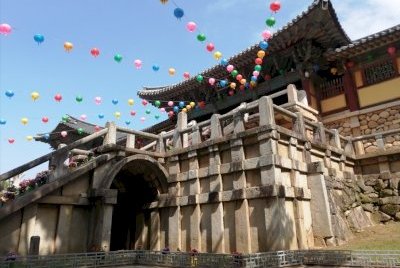
With many recent mixed reviews on this site, I wasn't sure what to expect of Seokguram and Bulguksa. All I knew was that I had to include them on my June 2023 trip to Korea at all costs, as I knew them to be renowned as masterpieces of the great Silla kingdom. I visited them on the morning after a late night exploring Historic Gyeongju, which had tired the rest of my party out, meaning I was to explore this site on my own and be back at 12:00 to join back up and head to Yangdong. With under 4 hours to check both components off my list, I rushed for bus 700 at the central bus station (I think you can also take bus 11, though the route may be different), which passes by Bunhwangsa and Bomun Lake on the approximately 40-minute ride to Bulguksa. Upon getting off, it's about five minutes uphill to get to the gate, then another five minutes to leisurely get through the temple grounds until you arrive at the imposing front of Bulguksa Temple.
The historic staircases are on full display, and considering their granite composition, they're already quite impressive. Inside the temple, the two pagodas are also immediately seen in the main courtyard; this will probably be extremely crowded, but these are also worth stopping to gaze at the exquisite carving and artistry on display. The rest of the temple, wooden as it is, expands up the slopes of the mountain, but …
Keep reading 0 comments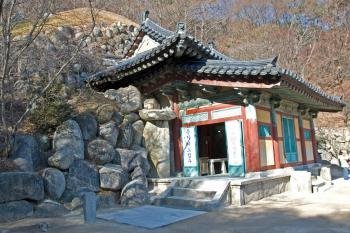
I visited here in fall of 2007.
Located a short distance out of Gyeongju, the Seokguram Grotto and Bluguksa Temple are two completely different w sites put under the same world heritage banner. The Seokguram Grotto was a real disappointment. It is much more difficult to get to, sitting on the top of a mountain, and up a winding road. You have to walk about 10-15 min to get there, and when you do get there, it is a tiny alcove where you can’t take photos, and the Buddha is walled off behind glass.
The Bluguska Temple, however, is the most impressive thing in the Gyeongju area. It was the best-preserved temple I visited in South Korea and is a rather large complex. The above photo is the front of the Seokguram Grotto. Both the temple and the shrine can be visited from Gyeongju on a half day trip via taxi or organized tour.
Read more about the Seokguram Grotto and Bulguksa Temple on my website.
Keep reading 0 comments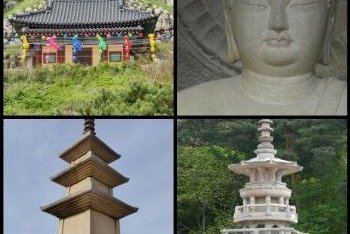
I visited this WHS in April 2017. Overall, I have mixed feelings on this WHS. I think that the Seokguram Grotto alone surely possesses OUV and is perhaps one of the only truly iconic sites in South Korea. However, it is very difficult to appreciate its outstanding value from behind a glass!
I understand that it would be impossible to control the crowds without it, but at least a guided tour or specific time slot bookable online in advance shouldn't be impossible to organise. Being relatively small and just one 'grotto', in my opinion fuelled ICOMOS to suggest including Bulguksa Temple in this inscription, which is perfectly capable of catering for the crowds and possesses 2 important Silla stone pagodas among other relics. However, the majority of this temple has been totally reconstructed as recently as 1969-1973 so in my opinion it detracts rather than complementing the impressive grotto.
Bulguksa Temple was originally built in 751 AD but it was burnt down completely during Japanese invasions in 1593. Some of the buildings were rebuilt but the whole temple was completely restored or reconstructed in 1969-1973. The most important cultural properties from the Unified Silla period are located on site including the 2 stone pagodas of Seokgatap and Dabotap. The former is a 10.3 m tall three tier stone pagoda which was restored in 1925 and contained in its interior what is believed to be the world's oldest example of woodblock print. It is quite similar to the one found on …
Keep reading 0 commentsThibault Magnien
Seokguram Grotto and Bulguksa Temple
Seokguram Grotto and Bulguksa Temple (Inscribed)
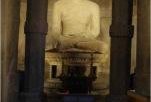
Seokguram Grotto and Bulguksa Temple form one of the most famous site in South Korea.
Bulguksa is a Buddhist temple completed in 774 by kings of Silla Kingdom (located in Gyeongju). The complex has been destroyed, and rebuilt in 1604. It has been renovated several times since there. It is home to seven National treasures of South Korea, whose the two famous stone pagodas (Dabotap and Seokgatap).
The Seokguram Grotto, is located four kilometers to the east, on the hill. You can go there from the temple either by walk through a beautiful forest way, hiking the hill, or by bus. The hiking will take you almost one hour but the frame worth it. The Grotto is almost located at the top of the hill, 750 meters above sea level.
As in the entrance of Bulguska temple, The Four Heavenly Kings guard the corridor.
Its construction began in 742 and was completed in 774. The Buddha statue it welcomes exemplifies one of the best Buddhist sculptures in the world. The Japan sea is visible from this place when clouds are not too present.
Keep reading 0 comments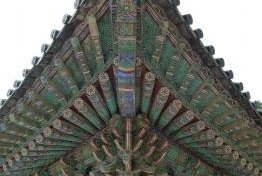
These two sites were a rather pleasant way to start my exploration of South Korea. I started at the small Seokguram Grotto, I was impressed by the quality of the carving inside. It is very small but of a high quality, reminding me of my visit the previous year to Ellora. After this brief viewing it was a lovely stroll back down to Bulguksa, the 2,5km walk led me through some lovely forests which were starting to show the first colours of autumn.
Bulguksa was a pleasant temple to walk around with some fine examples of wooden architecture and some rather lovely painted panels. There were lots of Korean children running around and practicing their English on me which was nice, but it was also easy enough to get a little peace and quiet when I needed to by sloping off to the other side of the tranquil ponds dotted around the sanctuary.
These were a lovely way to start my WHS collection in Korea, and an easy and worthwhile afternoon trip from Gyongju.
[Site 5: Experience 6]
Keep reading 0 commentsFrederik Dawson
Seokguram Grotto and Bulguksa Temple
Seokguram Grotto and Bulguksa Temple (Inscribed)
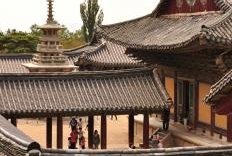
This review is made after my second visit to one of most outstanding temples in South Korea, Bulguksa Temple and its nearby Seokguram Grotto which in my opinion one of the must-see World Heritage Site in this country. I still remember my first visit in late spring 2008, Mount Tohamsan, where the temple complex is located, was in full bloom of spring color with hundreds of paper lantern decorating for the upcoming Lord Buddha's Birthday festival. I visited Seokguram by taxi from the city of Gyeongju, the tiny grotto was very popular for tourists, and I had to queue to see the famous Buddha statue. The statue claimed to be the best for Korean art, but it was behind the glass scene with some bad light reflection, so hardly to admire this great work.
After Seokguram I decided to hike down to Bulguksa Temple, the hiking path was lovely, highly recommended, the forest was full of maple trees, the autumn must be very gorgeous, I even told my friend that one day I want to come back to see autumn foliage at Bulguksa Temple. When I reached the temple, which is considered as one of the three most important temple in the country representing the Lord Buddha, I was quite shocked to see hundreds of tourists in the temple, I hardly had time to appreciate the temple, that why I much preferred Haeinsa, another WHS temple of Korea.
But in late summer 2011, I had a chance …
Keep reading 0 comments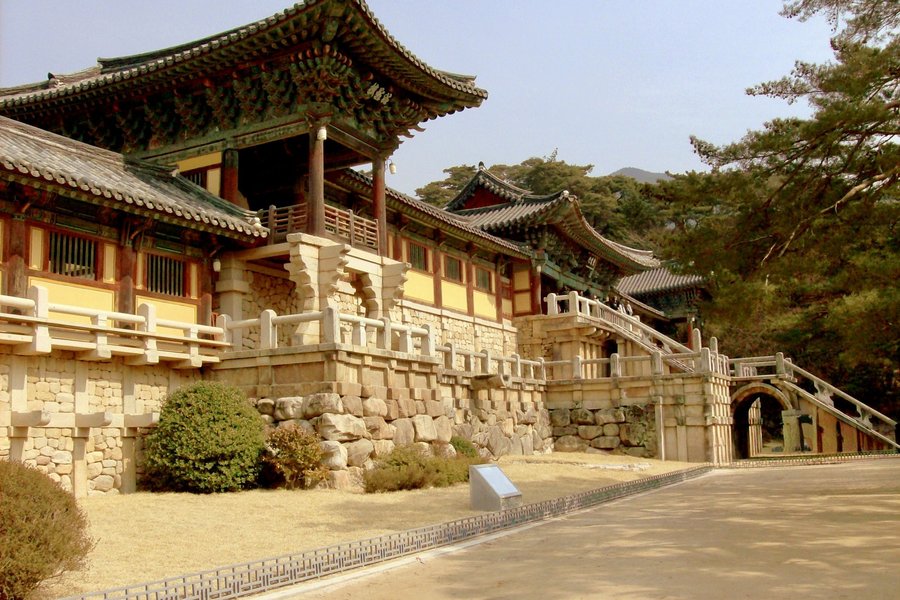
A trip to Gyeongju is not complete without a visit to at least one of these two Buddhist treasures. Seokguram Grotto is a masterpiece of Silla artistry, while Bulguksa is an iconic Silla temple. I visited both sites twice in 2008, during Winter and Summer. Bulguksa was severely damaged during the first half of the 20th century. The temple includes multiple national treasures, including the Cheongungyo (Blue Cloud Bridge) and Baegungyo (White Cloud Bridge), which are part of the entrance to the temple (pictured). Dabotap and Seokgatap are considered the best examples of Silla stone pagodas.
The stonework, temple layout, pagodas, and bridges of Bulguksa paired with the reconstructed wooden buildings help us experience a Silla temple. There are no wooden buildings in Korea that still exist that were constructed before the 14th century (Later Goryeo period). So, while I personally prefer Tongdosa, Buseoksa, and Beopjusa Temple, Bulguksa is still a worthwhile place to visit that remains a special memory.
I cannot add too much about Seokguram, but this video helps you understand how incredible this national treasure is.
Keep reading 0 comments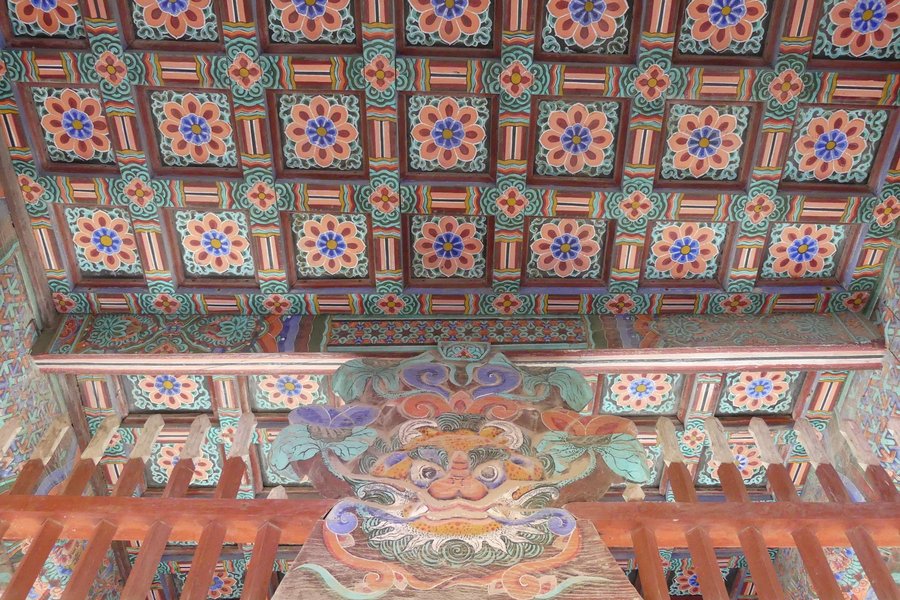
I have spent time at Bulguk-sa on two occasions, one winter evening in 2003 and one gorgeous wunny day in 2004. It left me feeling peaceful. I have spent time at Tongdo-sa and walked away with the same feelings of inner peace and tranquility. I visit Korea frequently and make a point of spending time at as many shrines and temples as possible. Bulguk-sa is my personal favourite. It is a testament to the Zen tradition and to the rich heritage of the Korean culture. It is picturesque and exquisite. Sokkurum is also beautiful but brace yourself for a wild bus ride up the mountain (walking is probably less scary)!!!! I would urge anyone visiting Korea to visit Bulguk-sa, Haein-sa and Tongdo-sa. They encapsulate the Zen faith and Korea.
Keep reading 0 comments
To understand Korea, you had better visit one its Buddhist temples and Pulguksa is one of the most beautiful. The grounds are lovely and serene and there are areas where one can easily meditate and pray. Temple buildings are colorful and lavashly decorated. (I remember the temple complex being remarkably quiet and visitors were respectful and reverent while touring.) The stone pagodas, unique to Korea, are strange and mystic. And the Sokkuram Grotto is a remarkable site for people of all faiths. (Too bad its behind glass.) This is a wonderful place to visit while in the Kyongyu vicinity.
Keep reading 0 comments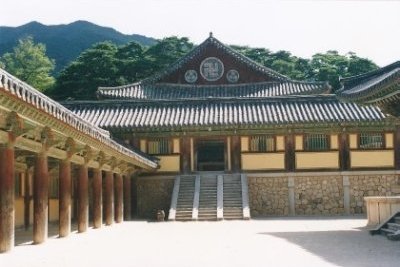
Pulguksa Temple is one of the main points of interest in the Gyongyu-area, so it was full of (Korean) tourists. A picturesque place.
The Buddha in Sokkuram Grotto is a very delicate one. Three meters high, and very white. Unfortunately, you can only see it from a distance (behind glass). Photos are not allowed.
Keep reading 0 comments
